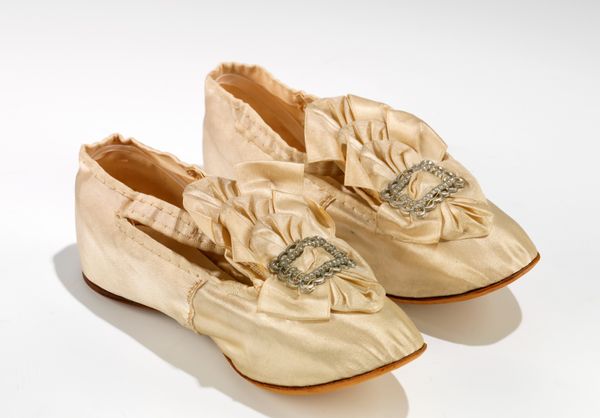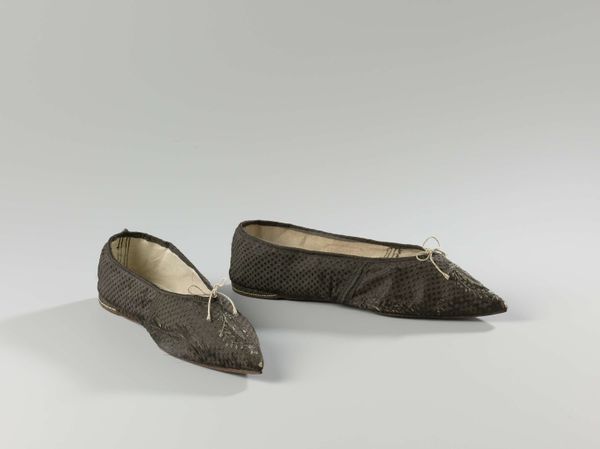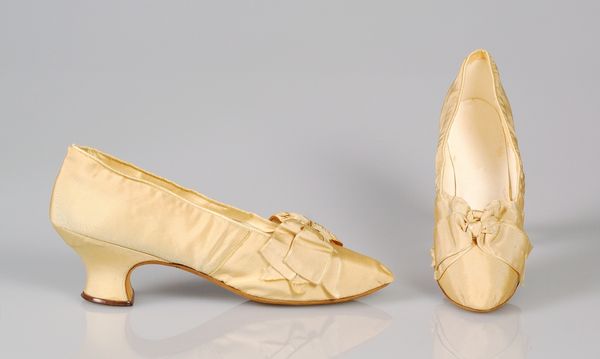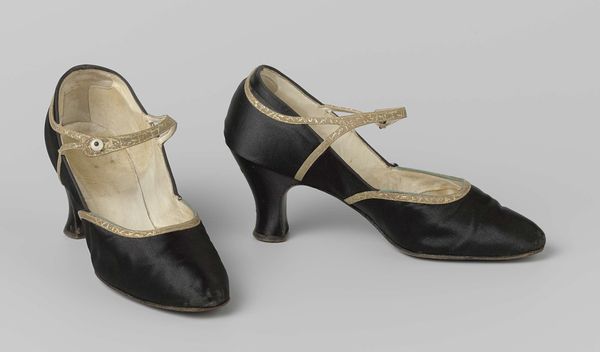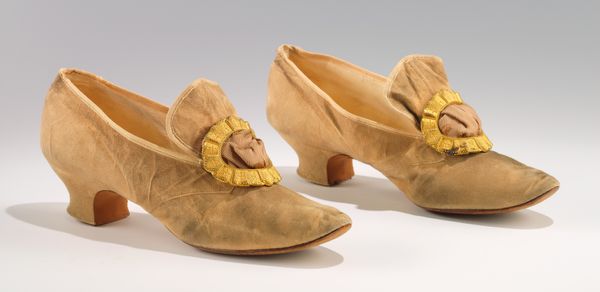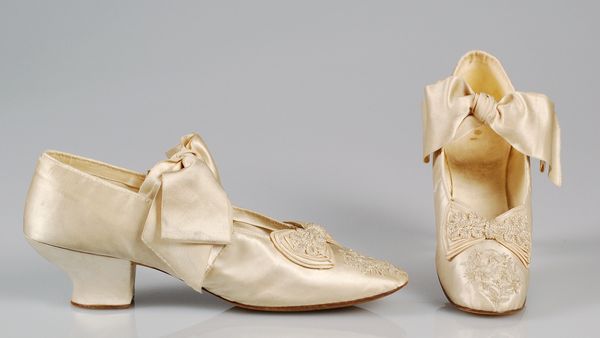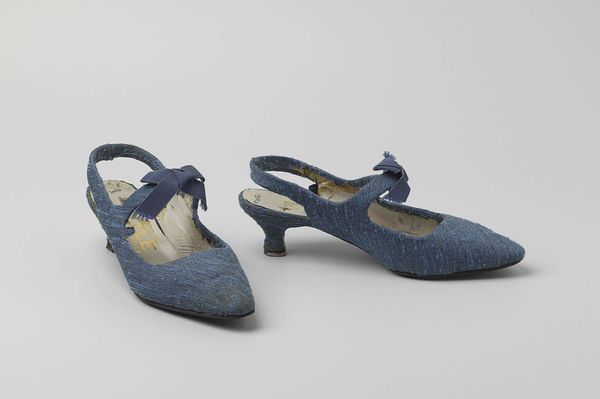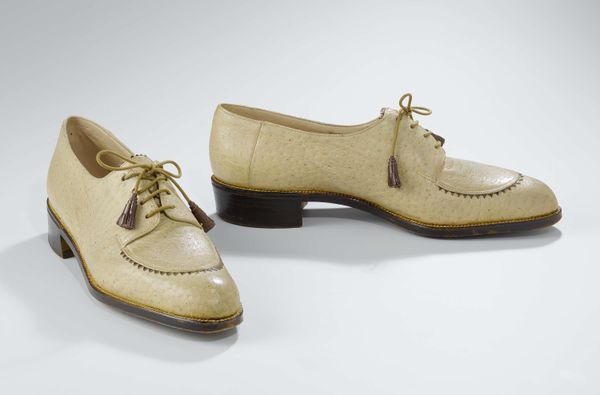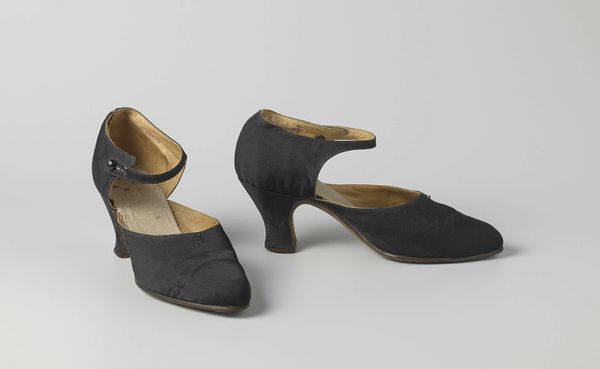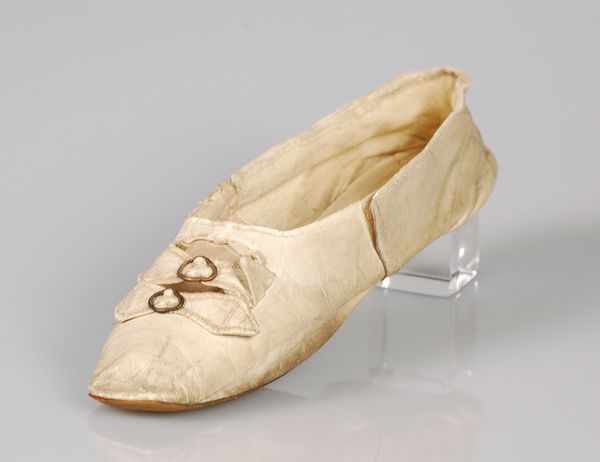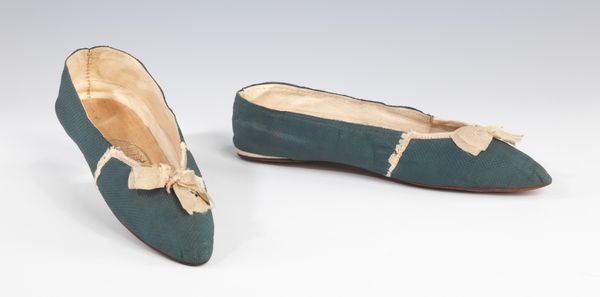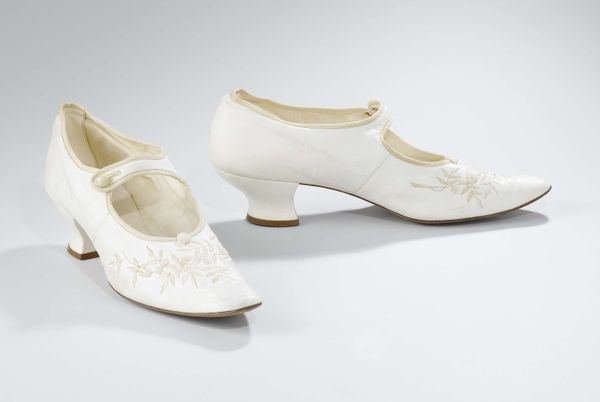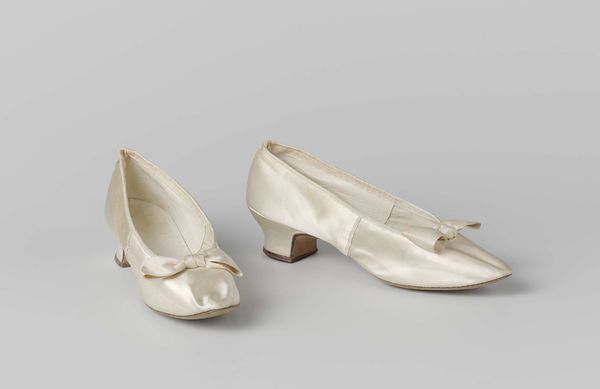
photography
#
studio photography
#
still-life-photography
#
fashion mockup
#
product fashion photography
#
clothing promotion photography
#
photography
#
product design photgrpaphy
#
clothing photography
#
wearable design
#
clothing photo
#
fashion shoot
#
retail photography
Dimensions: length 25.5 cm, width 6 cm, height 13 cm
Copyright: Rijks Museum: Open Domain
Curator: These remind me of a hazy, almost dreamlike memory. Editor: They're rather striking, aren't they? What we have here is a photograph of a pair of ankle-length boots dating from around 1830 to 1840. They're really a product of their time. Curator: Absolutely. Something about the stark contrast, that deep black toe against the sheer, lacy upper, it feels both delicate and strangely grounded. They speak of a world of drawing rooms and hidden desires, somehow. Editor: You're right to focus on the contrast. That velvet toe piece isn't just decorative; it speaks to the practicality expected even in fashionable footwear. Think of the cobbled streets, the need for protection, even for the most privileged feet. The means of their construction--the needlework, the types of lace—point to a whole network of skilled labor, primarily women, dedicated to the fashion industry. Curator: Yes, they evoke that sense of craft so intensely. Each stitch tells a story of quiet patience and concentrated effort. It makes you think, who wore these? What dances did they grace, what secrets did they carry? Editor: We can even consider how these materials—velvet, lace, the delicate stitching—would have been traded commodities. The lace alone signals intricate economic pathways. It makes you wonder about the trade routes and power structures implicit in every detail. Curator: In a way, they are small monuments, reflecting the hopes, dreams, and constraints of their era. Those shoes have touched the earth, connecting the past to our present. Editor: Indeed, they stand as potent examples of wearable design shaped by economic, material and social pressures—enduring emblems of a very specific slice of history.
Comments
rijksmuseum about 2 years ago
⋮
These ankle-length boots were probably made from an older pair of shoes. When they went out of fashion, the Parisian cobbler Chalopin attached a silk tricot throat (stocking). This was tied at the side with a cord.
Join the conversation
Join millions of artists and users on Artera today and experience the ultimate creative platform.
